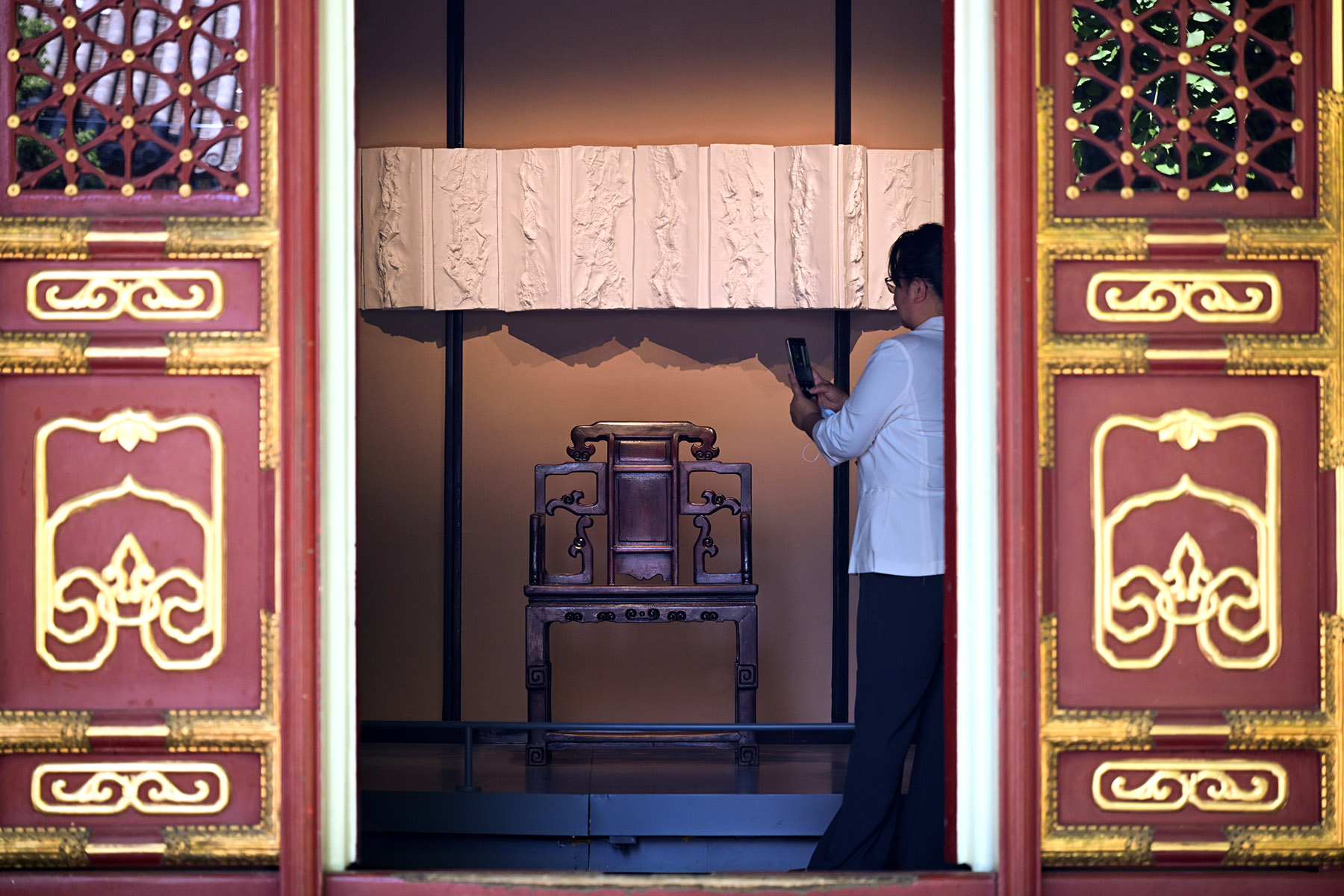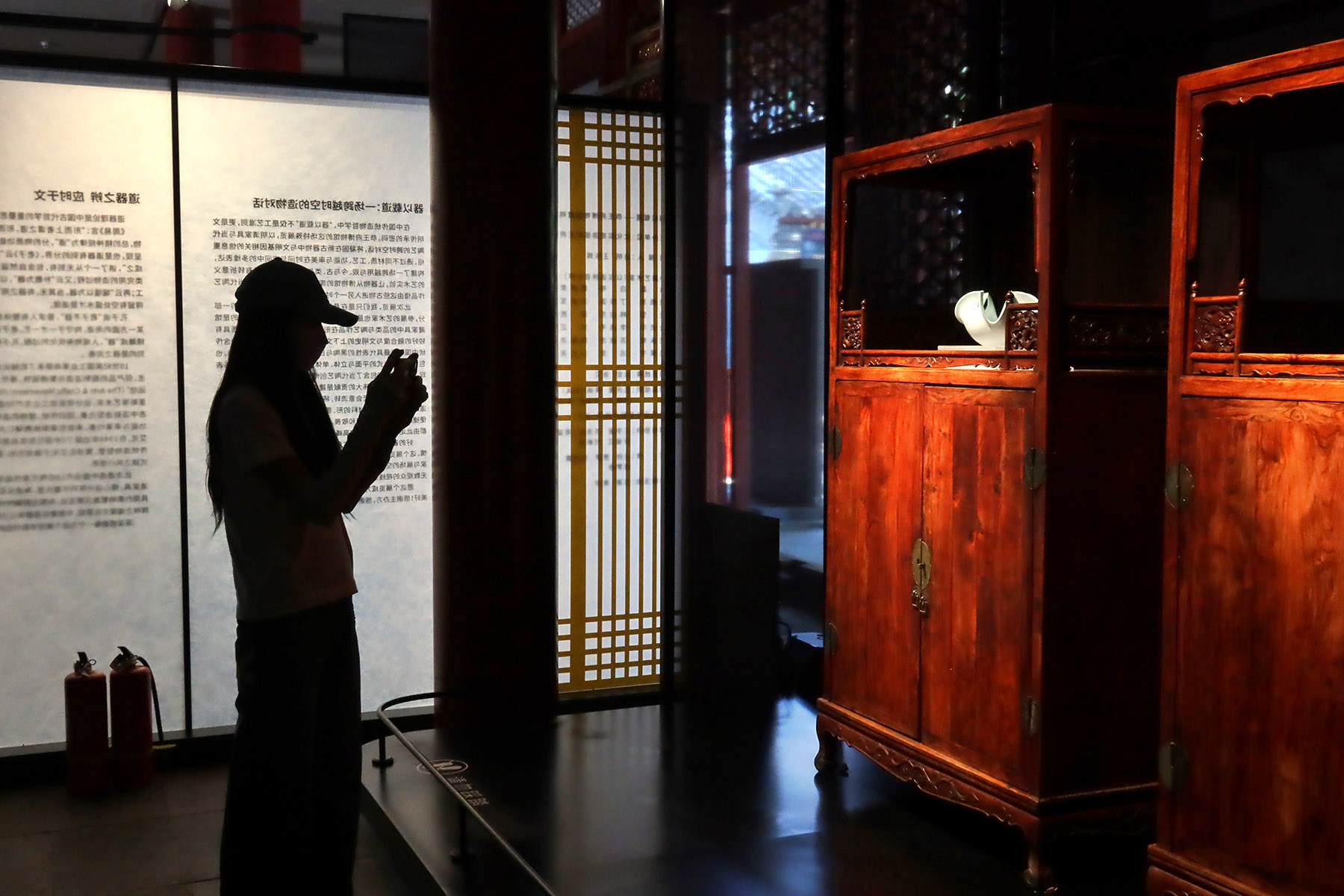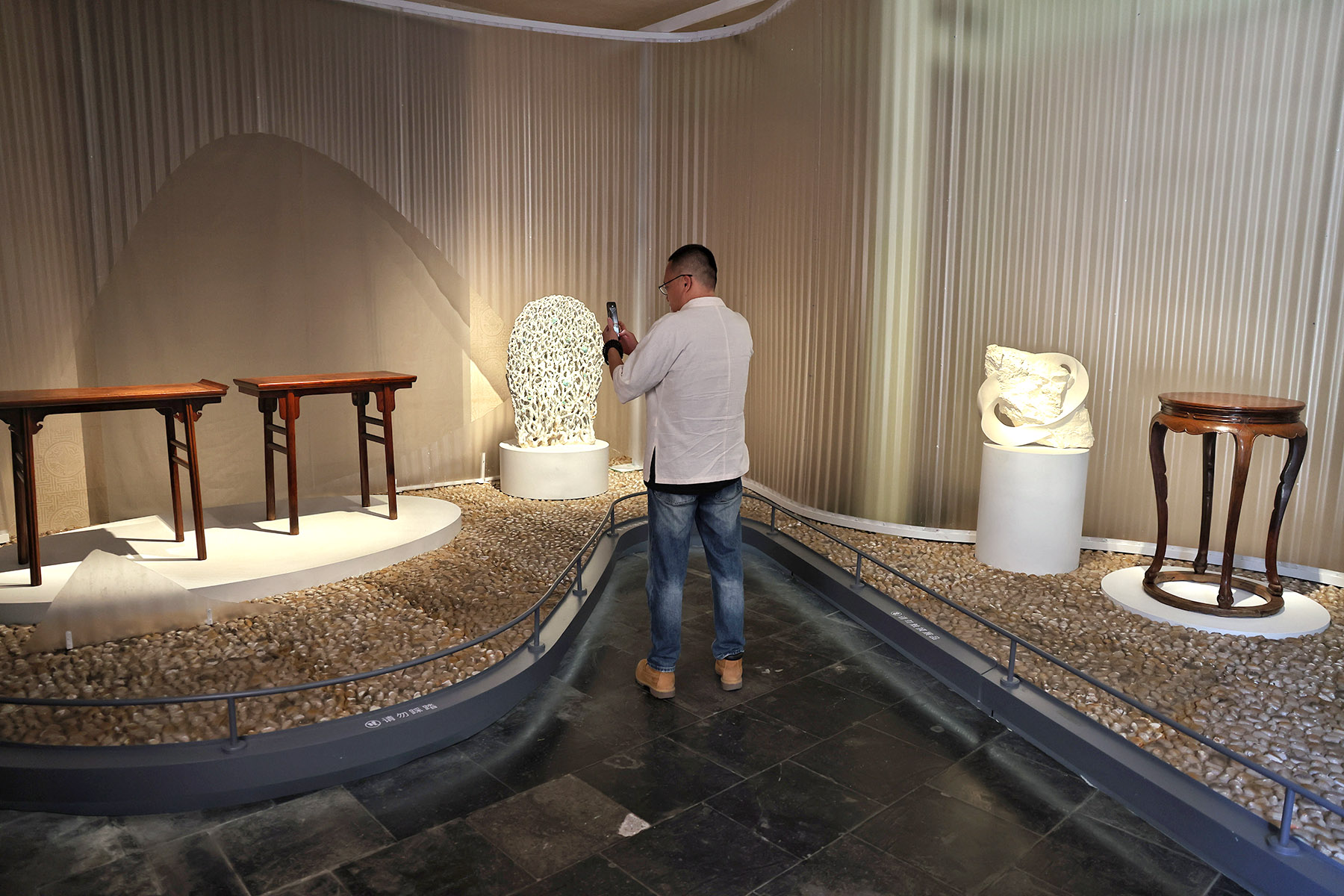Exhibition showcases the careful attention to detail that weaves through the ages, Yang Feiyue reports.

A magnificent red rosewood meditation chair, its segmented backrest showcasing exquisite Ming Dynasty (1368-1644) joinery techniques, gives one a good impression of the past's enduring craftsmanship legacy.
Once carefully preserved in the Prince Kung's Palace Museum's collection, this furniture masterpiece now anchors a groundbreaking exhibition that ushers in a dialogue between the past and present.
The chair's distinctive wide seat, designed for cross-legged contemplation, features elegant details: woven matting makes sitting more comfortable while gracefully arched aprons flow into outward-splayed legs that taper with precision.
Its quiet grandeur creates a striking juxtaposition with a neighboring contemporary artwork, a vibrant 2024 porcelain painting depicting a fish basket-carrying deity.
This thoughtful pairing is among the highlights of the Beauty of Simplicity section in Objects as Vessels of Wisdom, an exhibition that interweaves 29 Ming and Qing (1644-1911) furniture pieces from the museum's collection with 28 avant-garde ceramic works by 18 modern artists.
READ MORE: Sharing a grand collection
The exhibition, until July 6, is curated jointly by the museum and Bai Ming, a professor at Tsinghua University's Academy of Arts and Design and director of the China Artists Association's Ceramic Art Committee.
It explores the philosophical and aesthetic dialogue between classical Chinese craftsmanship and modern artistic expression, according to the organizers.
"In the philosophy of the Chinese craftsmanship tradition, the concept of objects as vessels of wisdom transcends mere technical standards — it encodes the very DNA of civilization," Bai says.

This exhibition transforms museum artifacts from stored objects into "living presences", while allowing contemporary ceramics to travel through temporal portals opened by their antique counterparts, he explains.
Traditional mastery reflected through porcelain, celadon and polychrome ware, sculptural and painted works is integrated with contemporary innovation characteristic of planar and three-dimensional forms, individual pieces and installations, and expressive, conceptual, abstract approaches, Bai notes.
"Through multidimensional expressions of material, technique, function and aesthetics across time and space, it creates a pivotal artistic experiment that bridges utility and contemplation, past and present, as well as classification and transcendence," he explains.
Since its late April opening, the show has captivated visitors with its innovative curation that reveals how classical design principles continue inspiring today's creators.
In addition to the meditation chair and porcelain painting pair at the Beauty of Simplicity part that highlights the ancient restrained elegance, the scroll-end tables and open-shelf cabinets also stand out for their clean lines and understated elegance. These classical furnishings are placed in close, "zero-distance" dialogue with contemporary ceramic artworks of varying styles and scales, each distinct yet harmoniously connected.
The second unit, Purity of Complexity, juxtaposes the ornate, dignified, and richly textured Qing Dynasty furniture with a curated selection of ceramics, including blue-and-white ware, Dehua Blanc de Chine, and rustic earthenware.
A serene atmosphere is created as elegant tea vessels cast their reflections onto the walls through a dual-mirror setup, offering an immersive visual layering.
The last part, Solace of Nature, centers on the poetic essence of garden living. Rosewood chairs are paired with companion pieces — flat-end and scroll-end tables — that echo one another like brothers.

Between sculptural ceramics evoking galaxies and mountain peaks, and porcelain screen paintings from the Neolithic Series, the arrangement resonates with the rock-lined garden paths and reflective lake views of garden scenery at Prince Kung's Palace Museum, inviting a meditative connection with nature.
As a pinnacle of Qing aristocratic architecture, the museum once brimmed with exquisite furniture and porcelain, embodying China's multicultural artistic traditions.
"We've selected but a fragment of the museum's collection and a sampling of China's ceramic artists, focusing on pieces whose forms and aesthetics maintain profound dialogue with traditional sensibilities and cultural continuity," Bai says.
China's greatest artistic contribution lies in creating ordered beauty for daily living. These objects begin with function, evolve through symbolism, and ultimately convey cosmic principles through sublime craftsmanship hidden in elegant forms, harmonious interplay of shape, texture and color, and dignity and reverence embedded in practical use, he adds.
ALSO READ: Chair exhibitions show culture sitting pretty
"This philosophical depth propelled Chinese furniture and ceramics to unparalleled historical heights," he emphasizes.
Wang Donghui, director of collections research department with the museum and cocurator of the exhibition, points out that German scholar Gustav Ecke's 1944 work Chinese Domestic Furniture showcased Ming-style pieces as exemplars of Chinese craft philosophy — where ritual culture, practical function and aesthetic sensibility achieved perfect harmony.
"These works (on display) create a transcendent cultural landscape where ceramics evolve from utility to spiritual expression, furniture reveals both minimalist elegance and ornate solemnity, and temporal and material boundaries dissolve in mutual illumination," Wang says.
Contact the writer at yangfeiyue@chinadaily.com.cn


